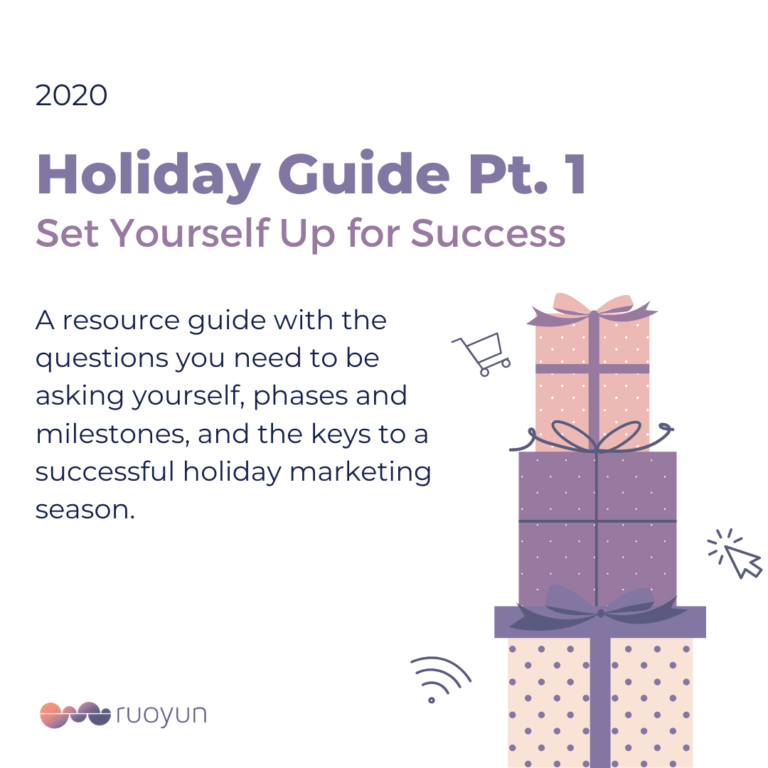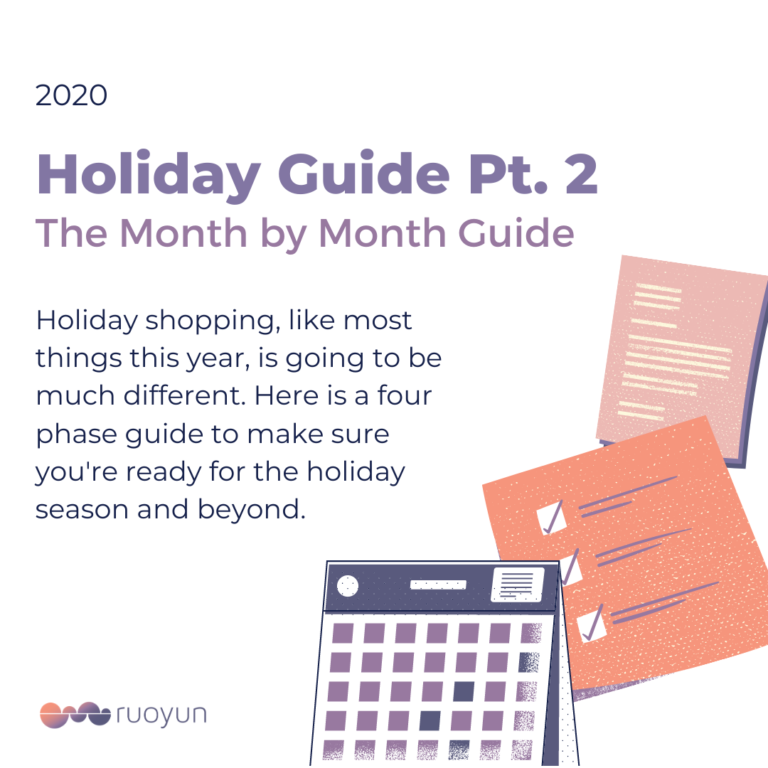The Digital Human Experience Activated – 2022 Marketing Trends
2022 is starting off new trends set to enhance the Digital Human Experience. If you’ve read last year’s Trends report, I had mentioned that we have advanced technologically by 5 years but we may not have been mentally ready for what that entailed. 2021 was the year of implementing and navigating these new technologies while simultaneously implementing the new boundaries that we value as both consumers and employees of businesses.
This year’s Trend Report will dive deeper into why do we need to focus on human connection and how to tie the trends back to your main objective, enhancing the Digital Human Experience that you are building for your customers. When it comes to getting new customers, it’s not about what trends to follow because trends will always evolve. It’s about what can you enhance in your current system that allows to you turn passive consumers into active, loyal collaborators and boost your word of mouth.
As a society, we are on the Pursuit of Purpose
If you read from my Two Years of Massive Change blog, we have two main mental shifts to contend with:
- Consumers are expecting brands to stand behind a larger value as they create impact in the world
- Employees are seeking positions that not only pay more but also speak to a larger purpose
Why is this happening? Since the pandemic, many people have embraced the concept of “Working to live instead of living to work”. People are seeking to add value to their life in their pursuit of what their inner purpose is. This is why gaming has been one of the biggest growers compared to TV according to GWI as consumers want to destress from their day but in an engaging way where they’re feeling progress. As they seek to find new meaning in their life, they’re implementing new intentions such as:
- Recognizing the things that they want to do and the things that they don’t want to do which resulted in the Great Resignation or Great Re-prioritization that continues to shift company culture and community.
- Calling out perfectionism. Many consumers recognize that being perfect isn’t real and are tired of the pressure to be perfect. For human beings are naturally not perfect, it’s what makes us human. Many consumers want to get to know brands at the raw and real level because it’s in those moments where we can build empathy and common ground.
- Showcasing their creative expression and their voice on social media through Tiktok.
- Engaging with brands and being a part of setting the next trends in our culture.
Because of the focus on the pursuit of purpose, people are recognizing that they want to have a human connection over a transactional experience. They want to feel like businesses are seeing their needs as human beings and that the actions of businesses are helping to create a better impact on our society. As consumers become more vocal and define upcoming trends, brands are realizing that they need to create a meaningful human experience digitally in order to stay competitive.
The Digital Human Experience Activated
Since the pandemic, the digital experience has become the primary form of connection. Consumers are connecting with businesses digitally on social media just as if they were to connect with businesses in person. Every part of the buyer experience is now digital and with every brand active now online the competition is more intense than ever. From purchasing directly, to customer service, to reading reviews from others and engaging with your directly over chat, according to Sprout Social, consumers are expecting this style of engagement.
Brands will need to connect at a humanistic level if they’re looking to stay above the throng. Consumers and employees are no longer settling for transactional experiences for they seek to be a part of something larger. This means they will be less loyal to brands that aren’t showing creative ways to collaborate together and build trust.
Creating meaningful customer experiences is key to everything that you are building. Consumers want to trust a brand before purchasing but they are also willing to lose trust quickly if they feel like it’s not actually a real connection. Consumers want to know the real people behind the brand to build rapport with another human. While this is a tight line to walk, brands are able to maintain brand loyalty by putting actions behind their words through creative expression.
When you think through how you want to cultivate trust through your online and in-person marketing, you’ll be able to turn passive consumers into active, loyal collaborators. So what are you doing beyond the one-time transaction to build this meaningful relationship with our customers? There are 4 main Cs to consider:
- Content Designed For Your Audience
- Create Your Corner of the Internet
- Connect on a Deeper Movement
- Collaborate with the creators who are defining our culture
Content designed for your audience
Let’s start with refocusing our content, our message back on our audience.
“We are living in a glorious era for content marketers, where the needs of the audience and the needs of Google have finally aligned. In the Covid era, audiences have demanded new levels of authenticity and empathy in our marketing, and Google continues to move toward prioritization of the same thing. Search intent and high-value content will win every day over keyword-stuffing and corporate bragging. Content and SEO are free to be the best of friends, and the opportunities ahead of us are exciting.”
– Ali Orlando Wert, SmartBug Media
There is no longer any excuse as to why you can’t connect in a humanistic way because you have to match certain SEO or technical goals. In fact, consumers are demanding that brands do so. Your community will tell you what they want rather than you telling them what to do. In the past, trends were set by a few. Now with the rise of Tiktok and other platforms that lets consumers create content easily, it’s now the masses who are defining what is considered a trend.
How do you know what your consumer wants? It’s more than understanding their buying patterns but how their choice of purchase will change depending on their cultural and societal backgrounds and it’s done through social listening. You can utilize social listening tools or dive into a hashtag rabbit hole to explore what your consumers are interested in. Take note of what people are creating and reacting to on platforms like Tiktok, what type of language they’re using and what starts conversation threads in the comments. If there are large viral trends, ask yourself why your consumers would be along for the ride. People crave interactions with influencers and brands because they want to be seen as a person part of a larger purpose and community.
So what content can you create that is designed for your audience that cultivates collaboration like duets, challenges, and more. If you’re creating more passive educational content, how can you invite conversations to start in the comment thread of your post?
Create your corner of the internet
No matter what you decide to do for content this year, the end goal isn’t about pure traffic transition to the website. It’s about creating a corner of the internet that you can feel like you’re a mover and shaker in. Social media has always been a reflection of our society and as brands continue to take ownership of their influence there are certain corners of the internet that they can show up and be an active participator in.
By creating your corner of the internet, you’re building a natural ring of influence and attracting your ideal customer to you rather than going out and hunting for them. The analytic to watch now is not how many people are you reaching but what percentage of your industry do you have a share of voice in?
How do you create your corner of the internet?
Lauren Quaintance of @storyation via @CMIContent. #CMWorld
- Connect to a deeper meaning by seeing the humans behind the brand. People like seeing people at the end of the day. They want to see not only fellow customers who love the brands but also the people behind the brand. They want to to know that the brands they’re working with have actual people behind the fancy mission statement. How well a brand takes care of it’s team reflects on whether or not a consumer wants to support that business. People want to see the real side of who you are and not just the corporate or stock images.
- Let your team or yourself be the trusted source of thought leadership. According to research conducted by LinkedIn and Edleman, “47% of buyers said that a piece of thought leadership had led them to discover and, ultimately, purchase from a company that was not considered to be among the leaders in a particular category.” The survey also revealed that 63% of respondents believed thought leadership is vital in proving that a company understands or can solve their business’s challenges.
- Get creative on the different ways to interact on a platform. It’s not just about posting constantly but how you’re posting and inspiring engagement through your content. For example, Instagram is on a mission this year to put “social” back in social media as it’s trying to bring personality by creating new features that make it easier to build engagement like Instagram Stories polls and stickers that really lets you interact with your most active fans. But it starts with showcasing your personality through the tone and vibe that you’re wanting to show on their platform.
Connecting on a deeper movement
says Amber Erickson
As you create your corner of the internet, build brand loyalty by connecting with your consumer on a deeper level. What gets your audience the most excited is connecting behind a common cause. Remember, we are in the pursuit of purpose and feeling like we are a part of something bigger than ourselves. So are you looking to inform, educate or inspire change to continue the conversation because:
- The ease of adoption of using video means word of mouth is visual. After two years of being on video calls, more and more consumers are comfortable with sharing what they love online and they want to see the reviews. User generated, branded content is about 50% of the advertising portfolio for Facebook and other companies because it’s a direct reflection of word of mouth. Brands should consider what type of challenges that they can create that connects at deeper level that will inspire their consumers to create content on Tiktok and other platforms.
- It’s more than just a dance challenge. When reviewing viral Tiktoks you’ll notice that most of the content involves challenges that invites reviewing how we view the world. Viral trends are designed to be thought provoking and invite people to share their view point. It doesn’t have to be serious and can be funny. It’s all about sharing human centric to show that as a brand you are listening to your community. So how can you tie a fun challenge back to the larger movement that you are working towards as a company? What topics often pop up in conversations that you have offline with customers that you can invite for them to share online through a video challenge?
Collaborate with the Creators who are defining our culture
“Content creators and influencers will become the voice of the people and the brands. Similar to how we see performance lift from friends of users who share Snapchat Filters, platforms like TikTok and Instagram will remain core landscapes for brands to partner with influencers who believe in—and will promote their brand—to their loyal followers.”
— Jack Johnston, Paid Media Strategist at Tinuiti
Here’s the thing, behind each creator and influencer, is a human being. Your influencer/creator usually is the ideal version of your end consumer who just happens to be really creative at personal expression so they’re able to garner more reach.
Creators are defining the culture to the point that this year Pinterest, Instagram, and Linkedin have tapped into their creators to see the trends that they’re seeing. Like Remi Bader, a 25-year old curve model, who’s built her corner of the internet by doing “realistic hauls” by trying on clothes and giving real feedback. She’ll tag the brands because she wants those brands to hear her and fix the problems. What’s powerful is through her content is that she’s proving to brands that there is room for growth and you have an ideal feedback loop with someone who is genuinely excited to help you do better.
Creators are shifting the public opinion about brands over the last 10 years and it’s not going away soon. In fact, new changes by Instagram are creating new ways for Creators to prove their influence with Social Commerce and Instagram’s native creator affiliate program. Even more, businesses have a paid partnership tag and collaborator function in place so that brands and ambassadors can collaborate more.
Most importantly it’s about creating authentic content, if you’re feeling like you’re being sold too then chances are so are your consumers and the filter of “ad” will immediately trigger in our minds. When brands are collaborating with creators, the conversation should go beyond “can you show how we use our product” towards “can you talk more about this movement that we are both passionate about?”
Phew! That’s a Wrap. So where do I start?
This year’s Trends report is different because it’s not about singular trends to keep watch but to look at the overall view of your consumer’s journey. The digital human experience is fully activated and will continue to be the primary form of connection. So where should you start? I always say go back to the basics and tweak your marketing system:
- Start with building intentional realistic goals. If you’re curious on what counts as a realistic goal read my, “Two Years of Massive Change” blog.
- Consider what areas you want to grow more to activate the human experience
- Tweak your system to allow you the bandwidth to expand into any new platforms
- Remember it’s like learning a new skill, you’ll deep dive in learning at the beginning and then you’ll eventually move onto the next skill while maintaining this one
Good luck and I can’t wait to see what you create.
Photo Credit: https://unsplash.com/@joshstyle






